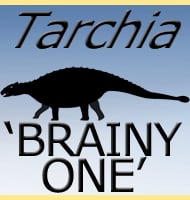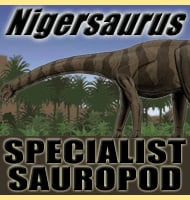In Depth
At first glance the lack of fossils might make Branisella not seem an important primate, but here you need to appreciate two things; where the fossils have been found and how old they are. Dating to the Chattian stage of the Oligocene period about twenty-six million years ago, Branisella was and at the time of writing still is the oldest known primate discovered in South America. More popularly this makes Branisella the oldest known New World Monkey.
Fossil evidence from other primate genera points to an Old World (Africa/Eurasia) origin for primates, and this is the stem for a large element of confusion as to how Branisella ended up in South America, since during the Oligocene, South America was detached and isolated from the other continents. Popular theory is that Branisella, or the immediate ancestors of, floated across the sea upon rafts of vegetation that may have been thrown clear from the mainland home by extremely powerful storms. This is not a huge stretch in itself, but palaeontologists are divided as to exactly where such life rafts could have originated from. Unfortunately very little of the skull and mandible of Branisella is known, and nothing of the post cranial skeleton has so far been located. What elements that have been discovered have not only been interpreted as being similar to Old World primates of the Oligocene, but also to the now extinct omomyids, a group of tarsier-like primates. If the old world connection is correct, then Branisella might have come to South America upon rafts that floated across the Atlantic Ocean from Africa. If the omomyid connection is the correct one, then the point of origin would be across the Central American Seaway from North America. Unfortunately at the time of writing it is impossible to interpret anything more than this, though future discoveries may help to piece things together more completely.
Because a post cranial skeleton is still unknown, it is impossible to establish either a definitive size estimate or lifestyle for Branisella. However the teeth of Branisella do have high crowns, and usually these kinds of teeth are found in animals that do a lot of grinding since the higher crowns extend the useful life expectancy of the teeth from the increased wear. Indeed, the first set of molar teeth in the jaw have been seen to be considerably more heavily worn than the molars at the back of the mouth. This could be a sign of the processing of tough food plants, though the lack of sharp cutting edges and cusps could be a sign of a diet of soft fruit which could be mashed by unspecialised teeth. It is also worth remembering for consideration that Branisella like other monkeys we see today would have foraged for whatever food was available, geographically and/or seasonally, and may have adapted its diet and feeding behaviour accordingly.
The presence of heavily worn grinding teeth may also mean that Branisella spent time on the ground since the plants that would cause this kind of wear would be most common on or near the ground. Also other monkey genera that have reduced tooth crowns and grinding wear (the opposite of the teeth of Branisella) are usually seen to be either folivores (leaf eaters) or frugivores (fruit eaters) that spend most of their lives in the upper tree canopy where vegetation is generally softer because it does not need to grow as strong.
Another thing to note about Branisella is the discovery of a partial orbit that when compared to others to reconstruct the missing remainder was seen to be particularly small. This means that Branisella likely had small eyes that would have not let much light through because of the reduced area, and this in turn means that Branisella was probably diurnal, or rather active during the daytime only. The bright light of the daytime meant that the eyes of Branisella worked perfectly fine at defining their surroundings, but the small size of the eyes also meant that the upper limit for light passing through the eye would be quite low, and during dusk and especially at night time Branisella might not have been unable to see much more than just very dark shapes against a black background.
Bringing all of the above together, it might be possible to reconstruct Branisella as a monkey that would descend down to the forest floor during the daytime where it foraged for tougher low growing vegetation while also possibly browsing for ripe fruit that had fallen to the ground. By foraging during daylight hours, Branisella could also have kept a lookout for potential predators that would have been easier to see during the day. As night approached, Branisella may have then ascended into the tree canopy for the night where they would have been relatively safe from ground predators that may have been more active as they hunted under the cover of darkness.
Further Reading
– New fossil materials of the earliest new world monkey, Branisella boliviana, and the problem of platyrrhine origins, M. Takai, F. Anaya, N. Shigehara & T. Setoguchi - 2000 – The adaptations of Branisella boliviana, the earliest South American monkey, R. F. Kay, F. Anaya & B. A. Williams. – 2001.









